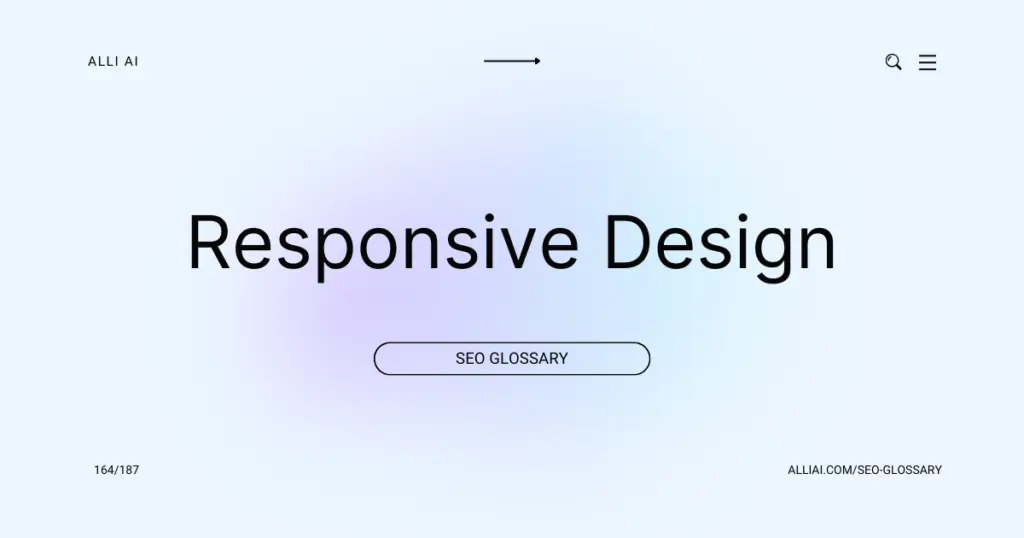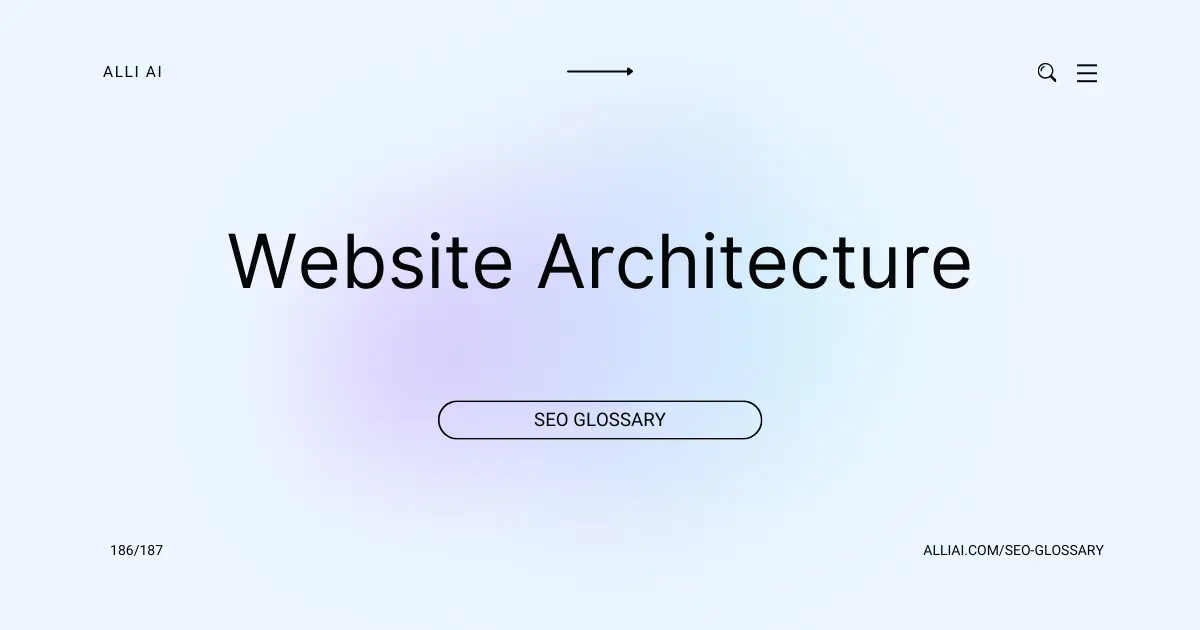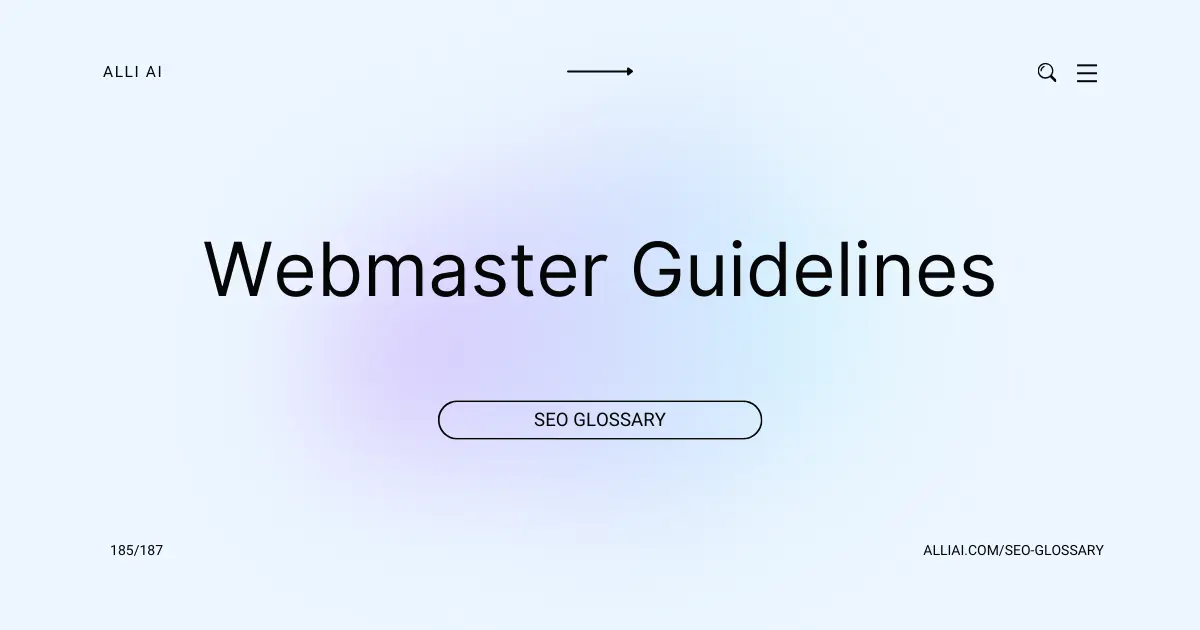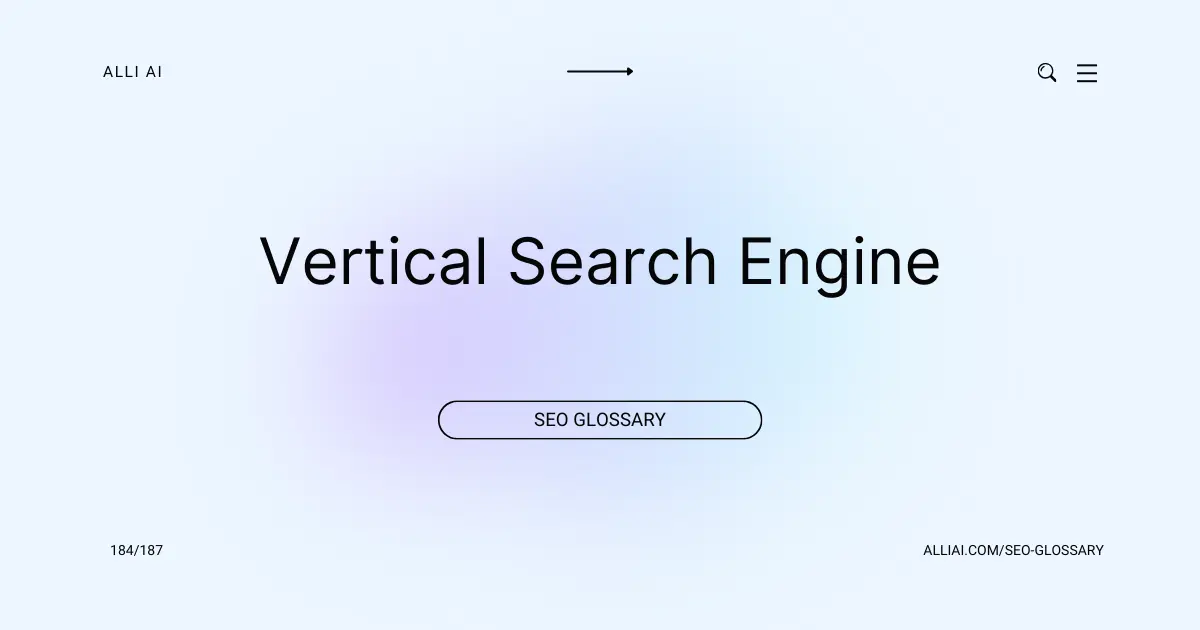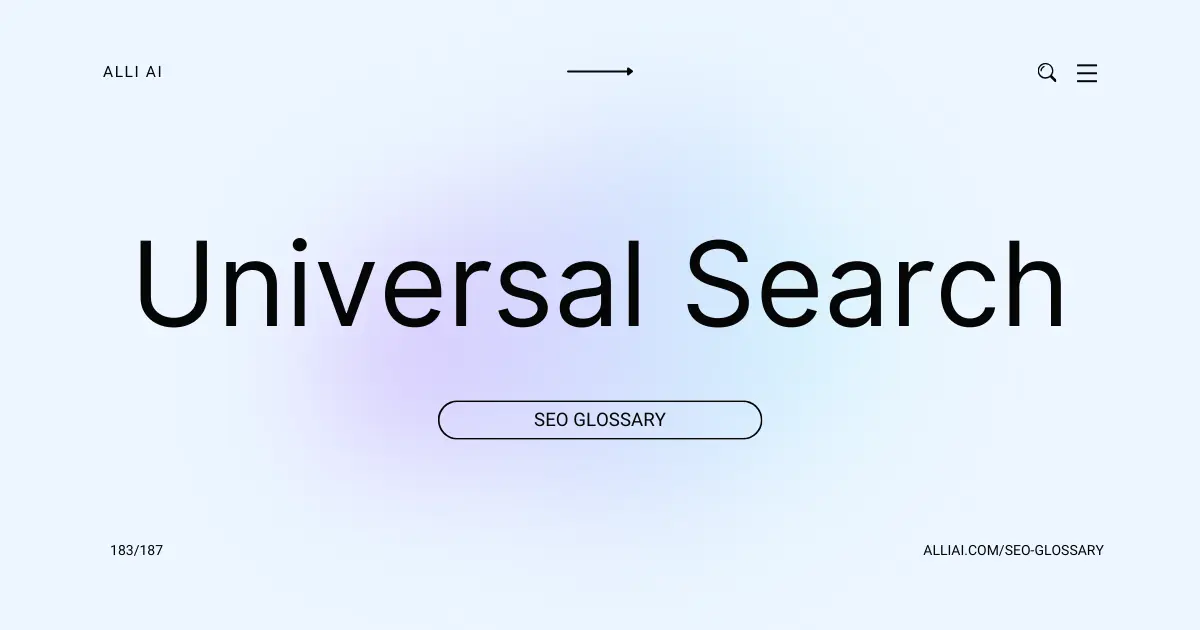What Does Responsive Design Mean?
Responsive design is a way to build websites so they look good and work well on any device, like a desktop, tablet, or smartphone. It automatically adjusts the layout and content based on the size of the screen viewing the site, ensuring a good user experience regardless of device.
Where Does Responsive Design Fit Into The Broader SEO Landscape?
Responsive design plays a crucial role in SEO by ensuring that websites deliver an optimal user experience across various devices such as desktops, tablets, and smartphones. Google uses mobile-friendliness as a ranking factor, meaning that responsive websites can potentially rank higher in search results. This approach eliminates the need for separate mobile URLs, simplifying content management and enhancing link equity because all links point to a single domain. Responsive design also improves site speed on mobile devices, reduces bounce rates, and increases engagement, all of which are important metrics for SEO. Additionally, it helps avoid content duplication issues and enhances the overall usability of the site, contributing to better user signals for search engines.
Real Life Analogies or Metaphors to Explain Responsive Design
Responsive design is like water. Just as water takes the shape of the container it’s poured into, responsive design allows a website to adjust its layout and content to fit the screen it’s being viewed on, whether it’s a desktop, a tablet, or a smartphone.
Responsive design is akin to a chameleon. A chameleon changes its color to match its environment for a seamless blend. Similarly, responsive design changes the appearance of a website to ensure it looks good and functions well on any device.
It’s like playing with a Rubik’s cube where each twist adjusts the colors to align correctly. In responsive design, each adjustment to the screen size rearranges elements for the best user experience, keeping everything in perfect alignment no matter the device size.
How the Responsive Design Functions or is Implemented?
1. Fluid Grids: Responsive design uses a flexible grid layout that adapts to the screen size. Rather than using fixed units like pixels, the grid is defined in relative units like percentages or viewport units (vw, vh), allowing elements to resize in relation to each other based on the screen dimensions.
2. Flexible Images: Images in responsive design are made flexible using CSS. By setting the `max-width` property to 100%, images scale down when the device screen is smaller.
3. Media Queries: CSS media queries are crucial to responsive design. They allow CSS to apply different styles based on the characteristics of the device viewport, particularly its width and height. This includes changing stylesheets based on device orientation (portrait vs. landscape), resolution, color capability, and other factors affecting layout.
4. Breakpoints: In responsive design, breakpoints are the points at which the website content responds according to the device or viewport size, changing the layout’s structure. These are defined within media queries. Common breakpoints are set for different devices like mobiles, tablets, and desktops.
5. Responsive Typography: Typography in responsive design adapts through the use of relative units like ems or rems, rather than fixed units like pixels. This makes text size responsive to the viewport size, improving readability across devices.
6. CSS Flexbox and Grids: Modern responsive designs often incorporate CSS Flexbox and CSS Grid layouts because they offer more flexibility and control in aligning and distributing space among items in a container, even when their size is unknown or dynamic.
7. Viewport Meta Tag: The viewport meta tag is an HTML tag used to control the layout on mobile browsers. It ensures that the page uses the appropriate width and scale for the device, enhancing the site’s mobile responsiveness.
These fundamental elements are implemented together to build a responsive web design that adapts smoothly to various screen sizes, improving usability and accessibility across devices.
Impact Responsive Design has on SEO
Responsive design significantly influences a website’s SEO performance, rankings, and user experience by:
1. Improving Usability: Websites that are easy to navigate and interact with on any device typically result in better user engagement, reducing bounce rates. Google interprets higher engagement and lower bounce rates as indicators of a valuable, relevant site, which can enhance rankings.
2. Increasing Mobile Traffic: With an increase in mobile users, a responsive website that adapts seamlessly to various devices, including smartphones and tablets, ensures accessibility and usability, capturing a larger audience.
3. Avoiding Duplicate Content: Responsive design uses a single URL structure across devices, preventing issues related to duplicate content that can arise with separate mobile and desktop sites. This consolidation improves SEO as link equity is also undiluted.
4. Boosting Page Speed: Responsive design often includes optimized images and fluid grid layouts that can improve page loading times. Faster loading times are crucial for SEO as Google uses page speed as a ranking factor, particularly for mobile searches.
5. Enhancing Local SEO: For local searches, responsive design offers an improved experience for mobile users who seek quick access to information, such as directions or contact details. This aligns with Google’s preference for mobile-friendly websites in local search results.
6. Increasing Social Sharing: Responsive sites typically provide a better platform for sharing content on social media, thus potentially increasing backlinks and traffic. Effective social media sharing can indirectly boost SEO rankings by proliferating content and increasing visibility.
These impacts collectively denote that incorporating responsive design can lead to better SEO performance, enabling improved search engine rankings and enhancing user experience, both of which are critical to the success of a modern website.
SEO Best Practices For Responsive Design
1. Ensure your website uses a responsive web design framework like Bootstrap or Foundation that automatically adjusts to various screen sizes.
2. Use CSS media queries to apply different styles for different devices. These queries should handle minimum and maximum widths to accommodate various screen sizes from mobile phones to large desktop monitors.
3. Employ a fluid grid layout where all the elements on your webpage resize in relation to one another rather than using fixed widths.
4. Optimize your images to be responsive. Use CSS to make images scale with the screen size or serve different image sizes based on device specifications using the `srcset` attribute in image tags.
5. Prioritize above-the-fold content for fast loading times, particularly on mobile devices. Ensure that the essential content loads first and is visible to users immediately.
6. Implement lazy loading for images and non-essential scripts. This means they are only loaded when they enter the viewport (visible part of the web page), which helps in speeding up the page load times on mobile devices.
7. Minimize the use of unnecessary JavaScript and heavy animations that could slow down page responsiveness and user interactions, especially crucial for touch interactions on mobile devices.
8. Test your website’s responsiveness using tools like Google’s Mobile-Friendly Test or Chrome Developer Tools. Make adjustments based on the test results to improve handling of different screen sizes and orientations.
9. Ensure touch elements are appropriately sized and spaced. Make sure buttons and links are easy to tap on a touch screen to improve user experience and interaction.
10. Use web-safe fonts and relative font sizing (like rems or percentages) to ensure readability across all devices. Text should resize according to the device’s screen size without causing layout shifts or the need for horizontal scrolling.
Common Mistakes To Avoid
1. Inconsistent Responsive Behavior: Testing across multiple devices to ensure the design’s responsiveness holds uniformly. Utilize tools like Google’s mobile-friendly test to gauge performance.
2. Poor Loading Times: Optimize images and utilize modern image formats like WebP. Implement lazy loading and assess server performance.
3. Complex Navigation on Small Screens: Simplifying navigation and considering mobile-first designs, possibly implementing a hamburger menu for smaller screens.
4. Ignoring Touch Interfaces: Ensure buttons and interactive elements are sized appropriately for touch interaction. Avoid hover-only elements.
5. Fixed Dimensions: Use relative units like percentages or viewport widths instead of fixed pixel widths to ensure fluidity in design elements.
6. Overloading with Content: Prioritize content that is crucial for mobile users, potentially using progressive disclosure techniques like accordions or tabs to manage content display.
7. Failure to Test on Real Devices: Complement emulator testing with real device tests to account for actual user conditions and behaviors.
8. Ignoring Accessibility: Ensure that responsive designs adhere to accessibility standards, including text sizes, contrast ratios, and interactive element accessibility.
9. Overusing Media Queries: Optimize and consolidate media queries to prevent maintenance issues and improve load times.
10. Lack of Retina Display Optimization: Use vector images and higher resolution resources to ensure clarity on high-resolution displays.
11. Blocking CSS, JavaScript, or Images: Ensure that no critical resources are disallowed in your site’s robots.txt file, as this can affect how search engines index your site.
12. Non-responsive Advertising: Ensure embedded ads are responsive so they do not disrupt the page layout on different devices.
